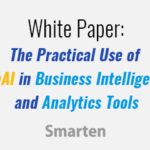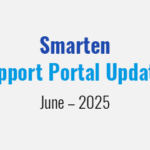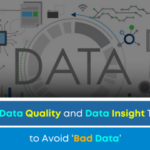
One of the most common excuses used to avoid data democratization and self-serve augmented data discovery is that the organization cannot guarantee data integrity and that, if business users have access to dated, incorrect or incomplete data, the resulting decisions will not be better but rather worse than the decisions made today. Further, this theory says that the distribution of this inaccurate data will have a systemic effect on truth and promote disastrous business decisions. There are several mistaken assumptions in this theory, and several ways an organization can guarantee success in a data democratization initiative.
An augmented data discovery solution is not an argument for data anarchy:
Rather, with the tools provided, an organization can put in place the appropriate data governance to address concerns regarding user access and the data that is integrated and accessed by business users. Data governance must encompass the ways in which data is used, shared AND edited. The right self-serve Augmented Data Discovery tools allows for a balance of data governance and data democratization for easy access and allows the IT team to control appropriate user access and data security at the individual, team, department, division and corporate level, without sacrificing data democratization.
Every person in the organization should be accountable:
We have become so used to the idea that IT is responsible for IT that we don’t think of data as one of the aspects of accountability we expect of each team member.
Your analytics strategy should empower business users AND make them more accountable and more of an asset in building business success. And, you can improve and refine the quality and interpretation of data to enhance decision-making. With integrated, mobile access, users may still need context to properly interpret and analyze data and share and present it with clarity and precision. Promote Data Literacy, and train and hold your business users accountable for using and presenting data appropriately to ensure clarity and appropriate decision-making.
Provide curated data with clear provenance and assignation:
You can establish the IT team as curators of validated data, and identify and highlight data, images with tags or ‘watermarks’. This process is not necessarily required for every type of data but by establishing priorities for when and how these labels are applied; the organization can significantly improve user comprehension and appropriate analysis. This kind of labeling can include a ‘data hash’. A Data Hash is a string of numbers and/or letters. If a file is modified, the ID of the modified file will note that it is not the original, so the user understands the source of the data and whether it has been edited. A ‘watermark’ can also be used to allow users to drill down to the original data provenance and see the details of changes and edits to determine whether the data has been substantively altered.
These are just a few of the considerations and methods you can use to ensure appropriate data governance, data democratization and a better understanding of the source of data and allow the organization to take full advantage of self-serve Advanced Data Discovery without fear of data anarchy or loss of data integrity.
Original Post: Does Data Democratization Result in Data Anarchy and Bad Business Decisions?










